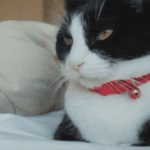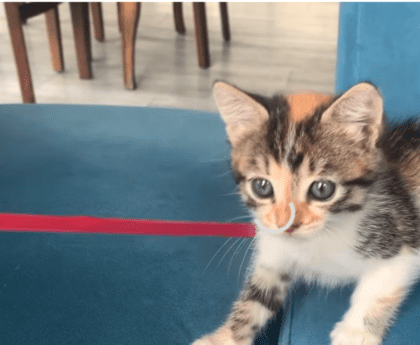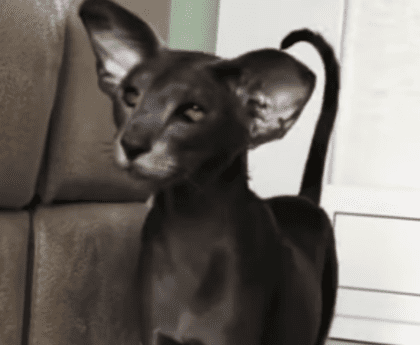- Why Your Cat Might Be Small: Causes and Concerns
- Introduction
- 1. Is My Cat Still Growing?
- 2. The Role of Breed
- 3. The Impact of Gender
- 4. The Importance of Nutrition
- 5. Addressing Medical Concerns
- 6. Environmental Factors
- 7. Regular Check-Ups
- Conclusion
- Frequently Asked Questions (FAQs)
- 1. My cat is smaller than other cats of the same age. Is this normal?
- 2. How can I tell if my kitten is still growing or undersized?
- 3. What role does diet play in my cat’s growth?
- 4. Can stress affect my cat’s growth?
- 5. When should I be concerned about my cat’s size?
- 6. Can my cat’s breed influence their size?
- 7. Are there any supplements that can help my cat grow?
- 8. What can I do to support my cat’s growth and overall health?
Why Your Cat Might Be Small: Causes and Concerns
Introduction
Cats, no matter their size, have an undeniable charm. Whether they are petite, large, or somewhere in between, their cuteness is undeniable. However, if you find yourself with a small cat and wonder why they are so tiny compared to others, this article will shed light on the possible reasons. Various factors, including breed, gender, age, genetics, nutrition, and even medical conditions, can contribute to a cat’s size. In this comprehensive guide, we will explore these factors in detail, helping you understand when to be concerned about your cat’s stature.
1. Is My Cat Still Growing?
Deciphering Your Kitten’s Growth
If you’re a pet parent to a small, young cat or kitten, it can be challenging to determine if their size is genuinely concerning or if they are still in the midst of their growth spurt. Cats are known for their rapid growth, with the average cat reaching their full size around 40 weeks, roughly 9 months old. However, it’s important to note that over 75% of this growth occurs by the time they reach 30 weeks of age, after which it significantly slows down. While cats can become sexually mature as early as 4-5 months old, their physical growth continues beyond this point, especially in larger breeds like Maine Coons, which may continue to grow for over a year.


2. The Role of Breed
How Different Breeds Impact Size
The world of cat breeds has evolved significantly, leading to notable differences in coat type, color, personality, and size. The breed of your cat plays a pivotal role in determining their size. Some cat breeds are known for their small stature, even when fully grown. The typical domestic cat weighs about 10 pounds (4.5kg), and cats with an adult weight below this threshold are considered ‘small breeds.’ Here are some common small breeds to be aware of:
– Singapura
One of the smallest breeds, they reach only about half the size of an average domestic cat.
– American Curl
Known for their distinctive backward-curling ears, members of this breed are usually on the smaller end of the scale.
– Munchkin
Munchkin cats carry a genetic mutation that results in short legs and an endearing kitten-like demeanor.
– Siamese
Chatty Siamese cats may be petite in physical size, but they possess larger-than-life personalities.
– Devon Rex and Cornish Rex
These delicate breeds are known for their small stature and unique characteristics.
– Japanese Bobtail
With their cute tails, this breed is also among the smallest, adding to their undeniable charm.
-Bombay Cat
When it comes to feline companions, there’s an endless variety of breeds to choose from, each with its unique characteristics and charm. Among these, the Bombay cat stands out as a striking and distinctive breed known for its sleek black coat and captivating personality. But just how rare are Bombay cats? In this article, we’ll delve into the world of Bombay cats to explore their origin, characteristics,
3. The Impact of Gender
Understanding Gender Differences
In the world of felines, female cats are generally smaller than their male counterparts. Cats that undergo early neutering might be slightly larger than those neutered later in life due to the delayed closure of the growth plates in long bones.
4. The Importance of Nutrition
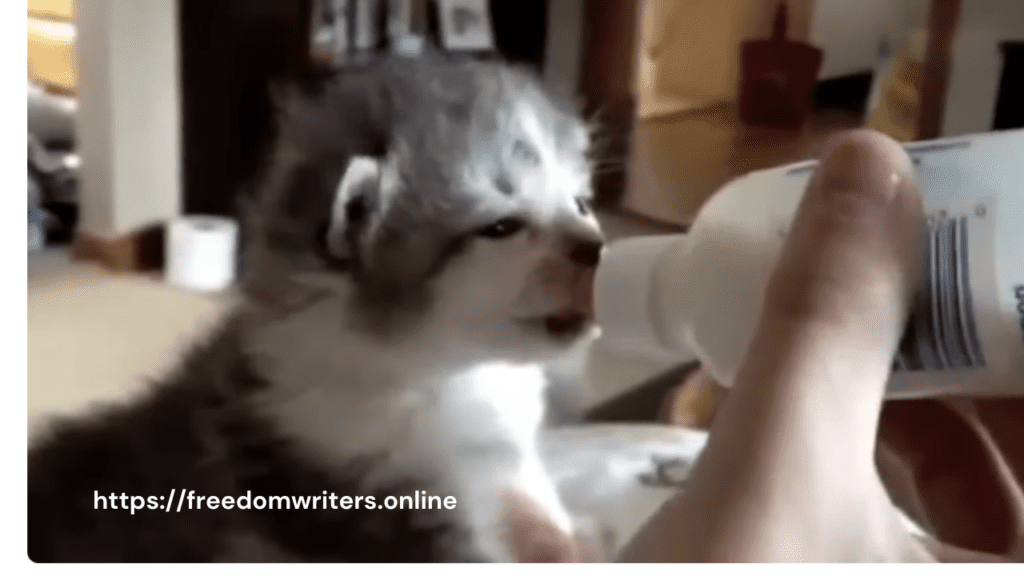

How Diet Influences Growth
A well-balanced diet is crucial for both the health and growth of your cat. Nutritional deficiencies can lead to stunted growth in young cats and health problems in adults. Cats are obligate carnivores, heavily reliant on animal protein in their diet, which can affect their growth if not met adequately.
Kitten Nutrition
Young kittens grow rapidly and require high levels of proteins and fats. Adequate milk intake, especially in the absence of the mother, is essential to ensure proper growth. Abrupt or early weaning can also hinder growth. Once weaned, kittens should be provided with a wet or dry diet specifically formulated for their nutritional needs.
Adult Nutrition
Adult cats need a diet primarily based on animal protein, tailored to their life stage. Cats are natural grazers, often requiring at least two meals a day. Inadequate quantity or quality of food can result in chronic health problems.
Feeding Habits
Cats typically eat multiple small meals a day, although many domesticated cats adapt well to a twice-daily feeding schedule. However, some cats may struggle with rigid feeding times, benefitting from more flexible, ad-lib feeding. In multi-pet households, ensuring that all cats have access to food is crucial, as dominant cats may inhibit others from eating.
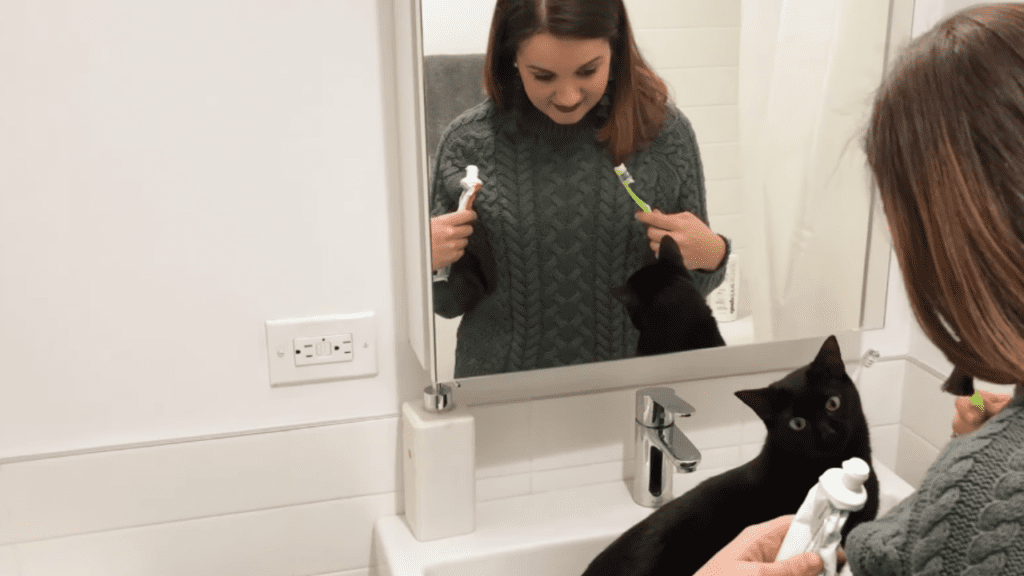

5. Addressing Medical Concerns
When to Seek Veterinary Care
If you’re concerned about your cat’s size or weight, consulting a veterinarian is a wise decision to rule out potential health issues. Genetic traits, diseases, and parasites can impact a cat’s growth.
Dwarfism
Dwarfism is a rare condition in cats, caused by genetic or chromosomal mutations, hormonal deficiencies, or abnormal growth plates. Cats with dwarfism often have short legs and a disproportionate body, leading to a unique appearance. This condition may come with various health problems, making veterinary guidance essential if you suspect dwarfism in your cat.
Parasites
Intestinal worms can lead to weight loss in adult cats and stunted growth in kittens. Common internal parasites include tapeworms, roundworms, pinworms, and hookworms, some of which can be transmitted to humans, posing a public health risk. Symptoms may include changes in appetite, vomiting, diarrhea, and a swollen abdomen. Regular anti-parasite treatment is recommended by veterinarians to prevent infestations.
Other Medical Conditions
Certain health problems, such as diabetes and hyperthyroidism, can cause weight loss and affect a cat’s size. These diseases are more common in older cats and may be accompanied by increased appetite, excessive thirst, frequent urination, hyperactivity, and poor coat condition. If your cat is losing weight despite a healthy appetite, a veterinary health check is advisable.
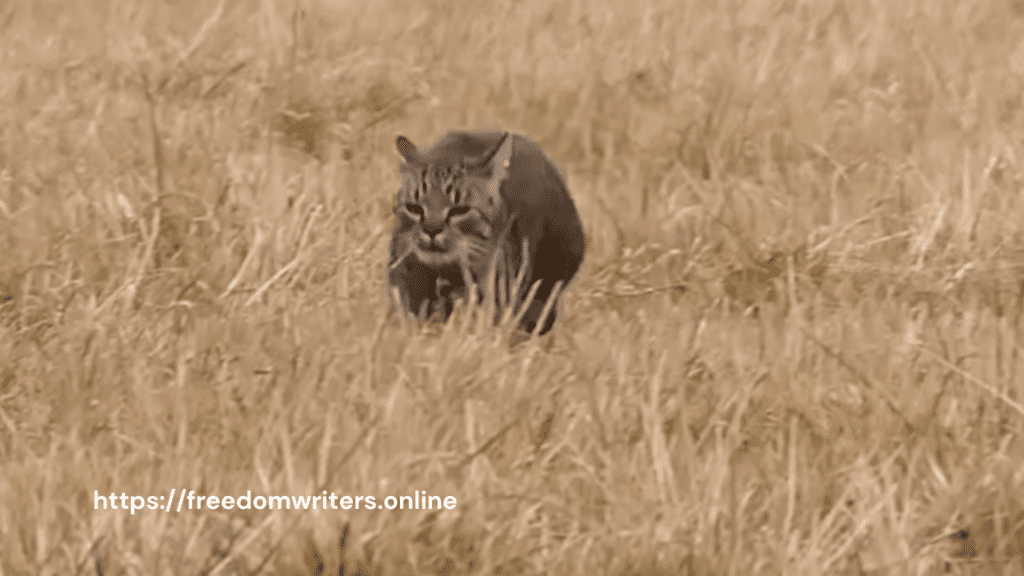

6. Environmental Factors
Influence of Surroundings on Growth
Apart from genetics, diet, and medical factors, a cat’s environment can also have an impact on its size. The quality of care, living conditions, and stress levels can play a role in a cat’s overall health and growth.
Quality of Care
Cats that receive loving attention, mental stimulation, and regular exercise are more likely to reach their full growth potential. Neglected or under-stimulated cats may experience slower growth or behavioral issues that affect their appetite and overall well-being.
Living Conditions
The environment in which a cat lives can significantly influence its growth. Cats living in overcrowded or stressful environments may not thrive as well as those in peaceful, comfortable homes. Providing a safe, stress-free space for your cat is essential for their growth and development.
Stress Levels
Stress can impact a cat’s appetite and overall health, potentially affecting their growth. Cats are sensitive creatures, and changes in their routine or environment can lead to stress. It’s crucial to create a calm, stable environment to support their growth.
7. Regular Check-Ups
Preventative Care for Optimal Growth
To ensure your cat’s health and monitor their growth, regular veterinary check-ups are vital. These check-ups can help identify and address any potential health concerns early on. Your veterinarian can provide guidance on nutrition, vaccination schedules, and overall care tailored to your cat’s specific needs.


Conclusion
Understanding why your cat might be small involves considering various factors, including genetics, breed, gender, diet, environment, and potential medical issues. While some cats are naturally smaller due to their breed or genetics, it’s essential to provide the best care, nutrition, and environment to support their growth and overall well-being. If you ever have concerns about your cat’s size or growth, consulting with a veterinarian is the best course of action to ensure your feline companion leads a healthy and happy life. Remember, every cat is unique, and their individual characteristics make them special, regardless of their size.
Frequently Asked Questions (FAQs)
1. My cat is smaller than other cats of the same age. Is this normal?
It can be normal for cats to vary in size, especially if they belong to different breeds or have different genetics. Some cats naturally remain smaller than others. However, if you’re concerned about your cat’s size, consult with a veterinarian to rule out any underlying health issues.
2. How can I tell if my kitten is still growing or undersized?
Kittens typically experience rapid growth, but it can vary based on factors like breed. To determine if your kitten is undersized or still growing, monitor their weight and consult with your vet for regular check-ups. They can provide guidance on whether your kitten is developing at a healthy rate.
3. What role does diet play in my cat’s growth?
Diet plays a significant role in a cat’s growth. Kittens require a diet rich in protein and fats to support their rapid growth, while adult cats need a well-balanced diet based primarily on animal protein. Ensure you’re feeding your cat an appropriate diet for their life stage to promote healthy growth.
4. Can stress affect my cat’s growth?
Yes, stress can impact a cat’s growth and overall health. Cats are sensitive to changes in their environment or routine, and chronic stress can lead to appetite changes and growth issues. Creating a calm and stable living environment for your cat is essential for their well-being.
5. When should I be concerned about my cat’s size?
If you notice significant changes in your cat’s size, weight, or appetite, it’s essential to consult with a veterinarian. Concerns about stunted growth, sudden weight loss, or unusual behaviors warrant a professional evaluation to rule out potential health issues.
6. Can my cat’s breed influence their size?
Yes, the breed of your cat can significantly impact their size. Different cat breeds have varying size ranges, and some breeds are naturally smaller than others. Understanding your cat’s breed characteristics can help you better assess their size.
7. Are there any supplements that can help my cat grow?
Supplements are generally not recommended for promoting growth in healthy cats. Providing a well-balanced, age-appropriate diet is usually sufficient. However, always consult with your veterinarian before adding any supplements to your cat’s diet to ensure they are safe and necessary.
8. What can I do to support my cat’s growth and overall health?
To support your cat’s growth and well-being, provide them with a nutritious diet, a stress-free environment, regular exercise, and access to clean water. Additionally, schedule routine check-ups with your veterinarian to monitor their health and address any concerns promptly.
Remember that each cat is unique, and what may be considered “small” for one cat might be entirely normal for another. If you have specific concerns about your cat’s size or growth, consult with a veterinarian who can provide personalized guidance based on your cat’s individual needs.



